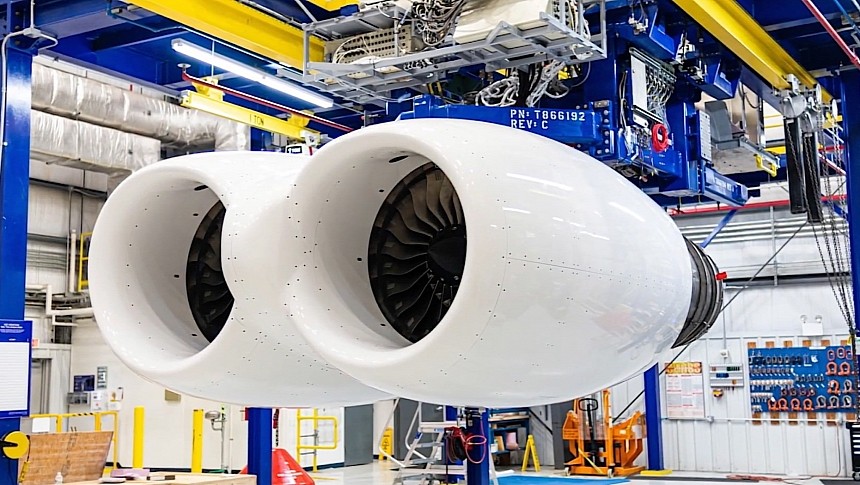Military aircraft have a tendency to stick around for long periods of time after they were introduced, especially the ones made over in the U.S.. Feeding on constant upgrades being made at the request of the Air Force, fighter jets, bombers, and helicopters usually live very long lives, oftentimes turning many decades old before being decommissioned.
Despite this, to date no flying weapons platform has managed to reach 100 years of age, and chances are none of them will. Well, none of them except the B-52 Stratofortress, the only aircraft in the world to have been officially selected to do that.
The bomber was born in the early 1950s, and a couple of years ago the U.S. Air Force (USAF) decided to extend its life until the 2050s. When it reaches that point it will effectively become the only aircraft in the world to be a century old.
To be fair though, it will only be the plane's name and design that will turn 100, as almost everything else on it has long ceased to be as it was in the 1950s. And more changes lie ahead.
Aside from getting serious upgrades for all its systems, the Stratofortress is also scheduled to receive new engines. As it flies today, the plane uses eight Pratt & Whitney units capable of developing 17,000 pounds of thrust each.
Back in 2021 the USAF decided these engines were no longer suited to carry the bomber on its missions, and announced it would be replacing them with new ones of Rolls-Royce make.
The hardware is officially called F130, and it's part of the BR family of commercial powerplants. They are also deployed on the C-37 or E-11, and their specs sheet shows they are capable of developing the same amount of power as the current units.
Since being selected for the task Rolls-Royce has been hard at work testing the F130s for their use in the Stratofortress. The same eight-engine, four-pod configuration is being put through its paces at the NASA Stennis Space Center in Mississippi, and so far the procedures "have accomplished all of Rolls-Royce's initial goals and allowed for the gathering of unprecedented amounts of data early in the program."
In an update on how things are going, Rolls-Royce said this week it is well on track to complete the engine testing by the end of this year. Once that is out of the way, production will begin at the company's facility in Indianapolis.
Integration into the B-25 is expected to begin sometime in 2025, but for ground and flight tests only at first. It's unclear at this point how or if the plane's capabilities (top speed, range, max altitude) will change. The F130s will be, for all intents and purposes, the last engines the B-52 will ever use, as it's unlikely it will fly for much longer past 2050.
The bomber was born in the early 1950s, and a couple of years ago the U.S. Air Force (USAF) decided to extend its life until the 2050s. When it reaches that point it will effectively become the only aircraft in the world to be a century old.
To be fair though, it will only be the plane's name and design that will turn 100, as almost everything else on it has long ceased to be as it was in the 1950s. And more changes lie ahead.
Aside from getting serious upgrades for all its systems, the Stratofortress is also scheduled to receive new engines. As it flies today, the plane uses eight Pratt & Whitney units capable of developing 17,000 pounds of thrust each.
Back in 2021 the USAF decided these engines were no longer suited to carry the bomber on its missions, and announced it would be replacing them with new ones of Rolls-Royce make.
The hardware is officially called F130, and it's part of the BR family of commercial powerplants. They are also deployed on the C-37 or E-11, and their specs sheet shows they are capable of developing the same amount of power as the current units.
Since being selected for the task Rolls-Royce has been hard at work testing the F130s for their use in the Stratofortress. The same eight-engine, four-pod configuration is being put through its paces at the NASA Stennis Space Center in Mississippi, and so far the procedures "have accomplished all of Rolls-Royce's initial goals and allowed for the gathering of unprecedented amounts of data early in the program."
In an update on how things are going, Rolls-Royce said this week it is well on track to complete the engine testing by the end of this year. Once that is out of the way, production will begin at the company's facility in Indianapolis.
Integration into the B-25 is expected to begin sometime in 2025, but for ground and flight tests only at first. It's unclear at this point how or if the plane's capabilities (top speed, range, max altitude) will change. The F130s will be, for all intents and purposes, the last engines the B-52 will ever use, as it's unlikely it will fly for much longer past 2050.
















